Canaux
108470 éléments (108470 non lus) dans 10 canaux
 Actualités
(48730 non lus)
Actualités
(48730 non lus)
 Hoax
(65 non lus)
Hoax
(65 non lus)
 Logiciels
(39066 non lus)
Logiciels
(39066 non lus)
 Sécurité
(1668 non lus)
Sécurité
(1668 non lus)
 Referencement
(18941 non lus)
Referencement
(18941 non lus)
éléments par Aatif Sulleyman
BetaNews.Com
-

Flashback Friday: How two university dropouts created Microsoft
Publié: octobre 19, 2018, 12:09pm CEST par Aatif Sulleyman
Bill Gates is a legendary figure, and not just in the world of technology. With countless awards and titles attached to his name, he has over the years been consistently recognized as one of the world's wealthiest, most powerful and most influential individuals. Also, anybody who can call themselves a 'philanthropist' in today's world has, more often than not, probably achieved something pretty grand. However, back in the day, Gates was merely a university dropout with a thirst for hacking computer systems. True, the university was Harvard, but Gates wasn't exactly on course to becoming the multi-billionaire entrepreneur he is… [Continue Reading] -

Flashback Friday: How Nokia went from paper merchant supplier to mobile phone giant
Publié: novembre 7, 2014, 2:28pm CET par Aatif Sulleyman
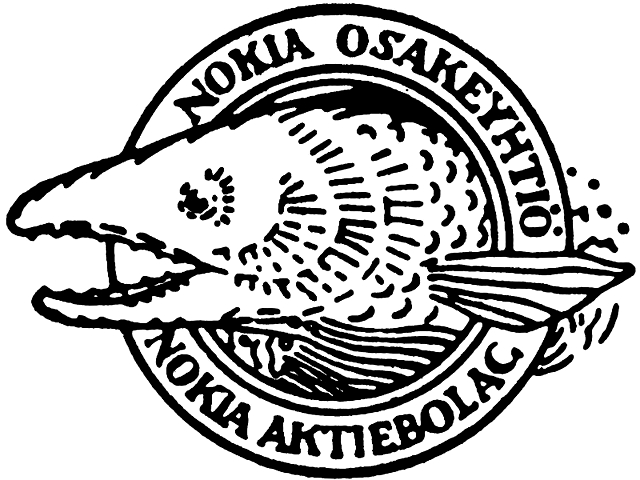
Let's face it, Nokia has seen better days. The Finnish company, which was once head, shoulders and knees above the competition in the mobile arena, has seen its market share dissipate over the last decade or so, and its once all-conquering mobile business is now firmly within the clutches of tech superpower Microsoft.
However, I'll bet most of you didn't know that Nokia is actually far older than most of the giants that have swarmed all over its old territory. The company was around long before anyone had even dreamt up the concept of the mobile phone. The present day firm's origins can be traced all the way back to the 1800s -- seriously.
In 1865, mining engineer Fredrik Idestam built a wood pulp mill in south-west Finland, adding a second plant three years later close to a town called Nokia. Idestam went on to formally name his business Nokia Aktiebolag (Nokia Company). In the years following, the organization merged with Finnish Rubber Works, a manufacturer of various rubber goods, including tires, and Finnish Cable Works Ltd, which specialized in telephone and power cables. Thus, Nokia Corporation was born, focusing on five distinct business areas: cables, electronics, forestry, rubber and power generation.
In 1960, Nokia decided to slide one of its many fingers into the telecommunications pie. The cables arm of the company set up an internal electronics department, where a team of employees worked on radio-transmission equipment. In the 80s, 90s and early 2000s, paper, tires, footwear, TVs, computers, robots, chemicals and military equipment were slowly thrown out of the window, leaving telecommunications as Nokia's primary focus.
During 1999, the company released the Nokia 3210 and it sold extremely well. Actually, that's an understatement. Along with the 3310, which followed in 2000, the mobile phone quickly became one of the most popular consumer electronics of all time, selling well over 100 million units. The Nokia 1100, which came out in 2003, attracted equally meteoric levels of interest. Unfortunately though, the glory years wouldn't go on forever.
Armed with the Symbian operating system, the Finnish firm at first adapted to the smartphone age very quickly indeed, boasting around a 40 percent market share as recently as late 2008. However, iOS, Android, RIM and Windows Phone were in hot, relentless pursuit. The former three steadily grew in popularity, and by 2010, Nokia was one of very few OEMs still using Symbian, with the majority of manufacturers fleeing to Google's mobile OS.
In 2011, under former Microsoft executive Stephen Elop's stewardship, the company signed a long-term deal with Microsoft, and Windows Phone became Nokia's sole mobile operating system of choice. A long series of questionable decisions were subsequently made, and it is widely recognized that Nokia single-handedly carried Windows Phone, its excellent Lumia hardware largely making up for a barren app store.
To add insult to injury, Microsoft then picked off Nokia's Devices and Services division in early 2014, with Elop returning to the Microsoft fold and receiving a very healthy payout indeed.
The transformation of a one-time paper mill-supplier into a world-leading mobile phone manufacturer is as impressive as it is bizarre. Its fall from grace was frighteningly swift. I for one would love to see Nokia rediscover its form, but it's going to need Microsoft to buck up its ideas.
Published under license from ITProPortal.com, a Net Communities Ltd Publication. All rights reserved.
-

Apple's latest iPhone 6 problem -- #dyegate
Publié: octobre 24, 2014, 9:21pm CEST par Aatif Sulleyman
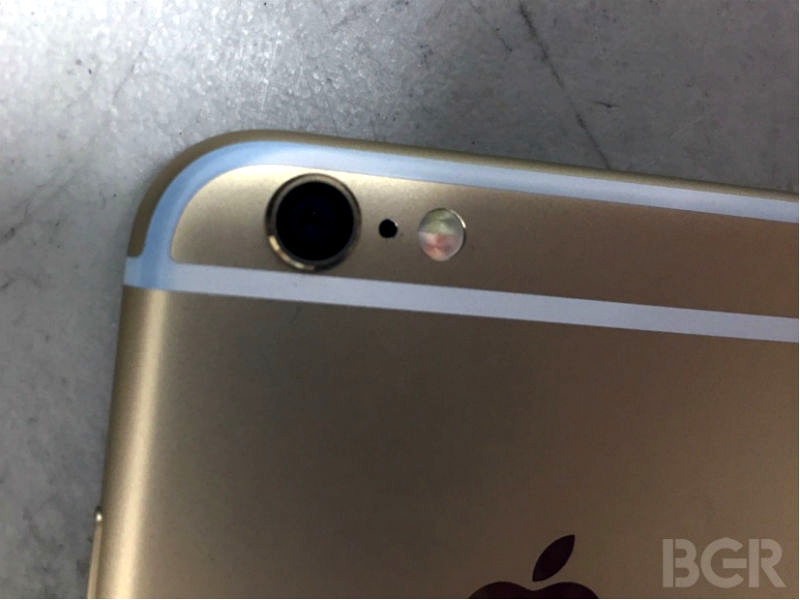
Apple's latest flagship smartphone has caused consumers quite a few headaches (literally, in some cases).
The handset, which doesn't come cheap, is prone to bending and tearing out people's hair, leading to the creation of the vastly amusing '#bendgate' and '#hairgate' scandals. Now, however, it's all about '#dyegate'.
iPhone 6 owners are complaining that dye from their jeans is being transferred to the rather ugly plastic strips that adorn the back of the device, staining the expensive piece of kit.
A review conducted by BGR appears to confirm that this is indeed the case.
According to the publication, "Apple support staff instructed users to carefully scrub their iPhones with various common cleaning products. When those products failed to remove the dye from the iPhones, no further assistance was provided".
Oh dear.
It's another blow that the Cupertino-based firm could have done without. Tim Cook's spell as the head of the company has seen its crown slip somewhat, but that doesn't seem to be deterring many consumers.
The company managed to sell 10 million units of the iPhone 6 and iPhone 6 Plus during the opening weekend of sales.
Image Credit: BGR
Published under license from ITProPortal.com, a Net Communities Ltd Publication. All rights reserved.
-

Flashback Friday: How Disney's Fantasia led to the foundation of HP
Publié: octobre 24, 2014, 2:26pm CEST par Aatif Sulleyman
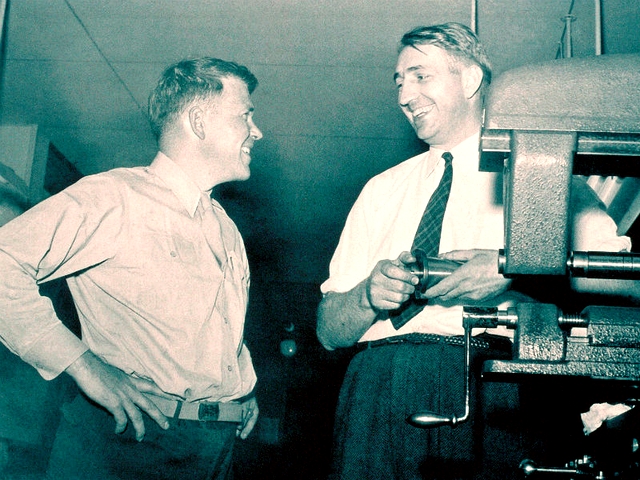
HP is one of the oldest and largest IT corporations in the world. It also happens to be one of the most interesting. Now largely associated with enterprises and hardcore business technology, it's a little-known fact that HP was actually the driving force behind the establishment of Silicon Valley.
Way back in the early 1930s, Bill Hewlett and David Packard were engineering students -- and friends -- at Stanford University. Upon graduation, however, they went in separate directions; Packard headed to New York State, securing a job with General Electric, while Hewlett took his studies further, at MIT and then Stanford again.
However, they stayed in touch, and in 1938 Packard returned to California with his new wife, Lucile. Hewlett found a property in Palo Alto that the trio could afford to rent and they subsequently all moved in, paying $45 per month. The newlyweds stayed in the downstairs flat, while Hewlett set up base in the backyard shed. The landlady gave them permission to use the property's 18 x 12ft garage as a workshop.
Hardly the most glamorous of arrangements, but the fact that 367 Addison Avenue's humble little garage is now an official California Historical Landmark, featuring a plaque that reads "Birthplace of 'Silicon Valley'", tells you everything about what the young entrepreneurs achieved there.
Hewlett and Packard made themselves busy over the following months, creating a series of prototype electronic devices, such as a harmonica tuner, a diathermy machine and a foul-line indicator to be used in a bowling alley. Their big break was just around the corner, though.
Under the guidance of Professor Fred Terman at Stanford, Hewlett developed a resistance-tuned audio oscillator, which was able to measure sound frequencies. The duo built a device in their garage and named it the Model 200A, in order to give the impression that it was manufactured by a company with a strong product line.
Crucially, their oscillator was, according to HP, significantly cheaper than rival devices on the market, and soon enough Disney came knocking on the door. The company, which at the time was working on the 'Fantasia' movie, ordered eight units of the 200B (an improved version of 200A).
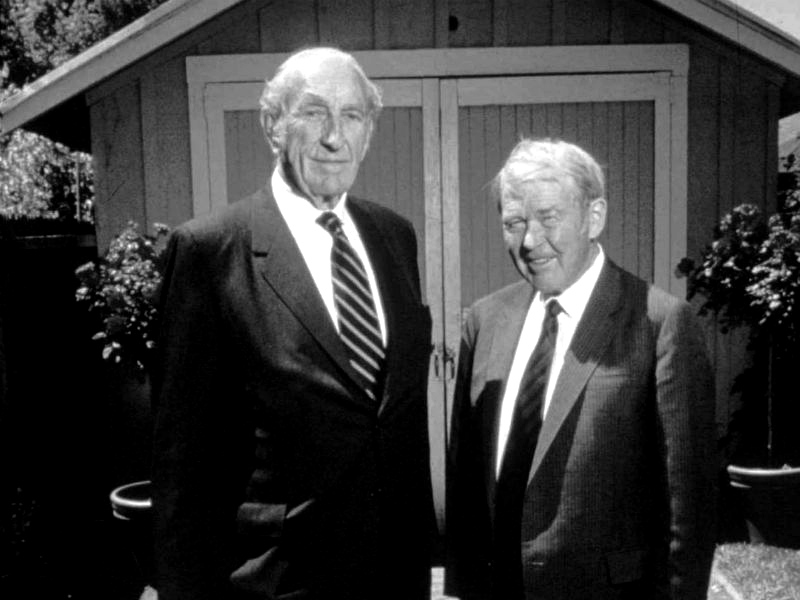
This deal led Hewlett and Packard to formally establish their little business on 1 January 1939, but the duo ran into trouble when they came to naming it. After tossing a coin, they decided to go for Hewlett-Packard, rather than Packard-Hewlett.
In 1940, having picked up two new employees, HP relocated to Page Mill Road, in Palo Alto. The following few years were eventful. In 1942, Hewlett was called up to fight in World War II, leaving Packard to run the company alone. During this period, the company manufactured oscillators that were used in radar equipment by the US army.
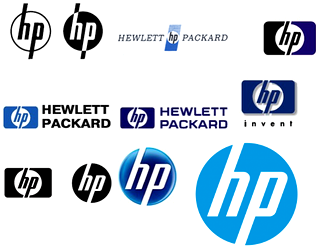 In 1947, Hewlett-Packard incorporated. A few years later, it got involved in conflict again (the Korean War this time), and found more and more success, as the demand for electronics skyrocketed. Over the years, the company has built a huge range of products, including printers, calculators, medical equipment, business software and, of course, computers.
In 1947, Hewlett-Packard incorporated. A few years later, it got involved in conflict again (the Korean War this time), and found more and more success, as the demand for electronics skyrocketed. Over the years, the company has built a huge range of products, including printers, calculators, medical equipment, business software and, of course, computers.Aside from its devices and solutions, HP became renowned for one thing in particular: its culture. "The HP Way" was described by Hewlett as, "The policies and actions that flow from the belief that men and women want to do a good job, a creative job, and that if they are provided with the proper environment they will do so". This led Apple co-founder Steve Jobs -- who was incidentally offered a summer job by Hewlett as a precocious 12-year-old -- to single out HP (along with Disney and Intel) as a company he admired.
David Packard passed away on 26 March 1996 and Bill Hewlett died on 12 January 2001.
Published under license from ITProPortal.com, a Net Communities Ltd Publication. All rights reserved.
-

Jony Ive accuses Xiaomi and others of copying Apple
Publié: octobre 13, 2014, 10:39am CEST par Aatif Sulleyman
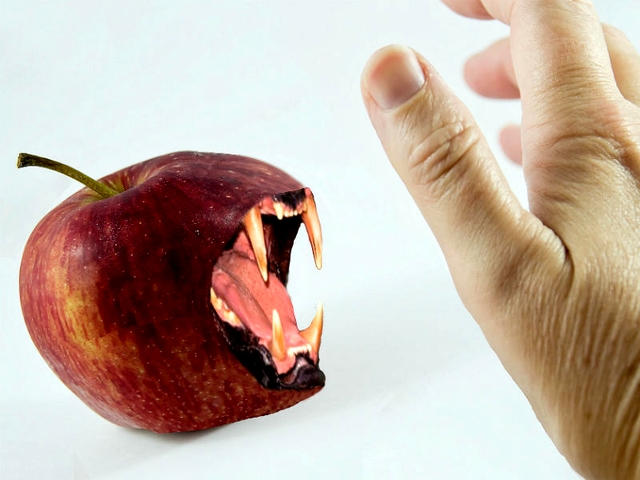
Apple may still be the number one brand in the world, but it's no longer head, shoulders and torso above the competition.
The likes of HTC and Sony have caught up with (and arguably surpassed) the firm in the smartphone market, while Lenovo and Microsoft are absolutely hounding the iPad and MacBook with their terrific Yoga and Surface products.
Unfortunately for Apple, the strain is beginning to show. The excruciatingly hip company is no longer trying to maintain its old aura of effortless brilliance, as head of design Jony Ive has demonstrated.
The man who is revered in design circles across the globe -- and well-known for his calm, quiet demeanor -- became a little tetchy when asked about so-called copycats at the Vanity Fair New Establishment Summit this week.
After being quizzed on some of Chinese firm Xiaomi's products which, admittedly, do look a lot like Apple's iPhones, Ive simply replied, "I don't see it as flattery. I actually see it as theft".
"When you're doing something for the first time, for example with the phone, and you don't know it's going to work, and you spend seven or eight years working on something, and then it's copied -- I have to be honest, the first thing I think isn't 'Ooh, that was flattering.' All those weekends I could have had at home with my lovely family but didn't, but the flattery made up for it," he added, sarcastically.
Xiaomi, which only launched in 2011, has made great market share gains over the past year or so, and grabbed many a headline when it picked up former Android head of product management Hugo Barra a year ago.
This is of course not the first time Apple and somebody connected with Google have clashed over accusations of theft. Late former Apple CEO Steve Jobs once famously raved, "I'm going to destroy Android, because it's a stolen product," because he believed that Google chairman Eric Schmidt had engaged in foul play.
"I'm willing to go thermonuclear war on this," Jobs continued. "I will spend my last dying breath if I need to, and I will spend every penny of Apple $40 billion [£24 billion] in the bank, to right this wrong".
Image credit: Flickr (dannyjackie)
Published under license from ITProPortal.com, a Net Communities Ltd Publication. All rights reserved.
-

Flashback Friday: How two Stanford University whiz kids accidentally built Google
Publié: octobre 10, 2014, 2:31pm CEST par Aatif Sulleyman
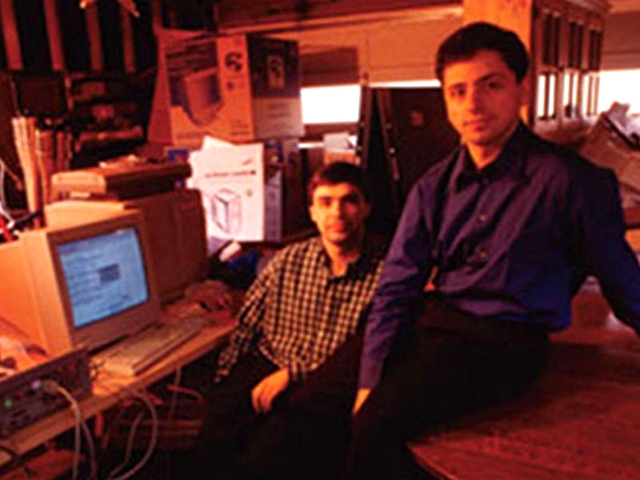
Second in a series. Google is everywhere. It's behind the world's most popular mobile operating system and map, one of the most successful email services ever, and has even expanded into the finance, wearables and transport sectors. What's more, it probably still serves as your browser home page (or just a means of finding out whether you're connected to the Internet or not).
The still-relatively-young company has come a hell of a long way since its inception in the late 90s, and looks well capable of dominating each and every avenue it decides to enter. However, the company had very humble, and indeed slightly odd, beginnings.
Back in 1995, Sergey Brin and Larry Page met each other for the first time and, plainly, they didn't exactly get off on the right foot. At the time, Brin was a 21-year-old second-year student at Stanford University, showing prospective new first-years around the campus. Page was 22, and had just graduated from the University of Michigan. "I thought he was pretty obnoxious," Page said of Brin to Wired in 2005. "He had really strong opinions about things, and I guess I did, too".
Page enrolled a short while later and chose to base his dissertation on the World Wide Web; specifically on how the various pages of the Internet are interlinked. He called the project 'BackRub', and his first task was to build an effective web crawler to get things moving along.
Brin, a math prodigy who had never quite settled on a single assignment, was drawn to Page's project and decided to get involved. "I talked to lots of research groups and this was the most exciting project," he said of his move.
The duo then successfully managed to develop an algorithm -- named 'PageRank' -- that was able to analyze backlinks and thus rank webpages by importance and popularity. All they had to do was feed the system a URL and wait for it to return a list of webpages, with the most important featured at the top. It was only then that they realized what they had created: an Internet search engine that was even more accurate than AltaVista.
In August 1996, Page and Brin released the first version of their newly-created tool to Stanford University students and it was an instant hit. Without enough money to purchase computing resources that would enable them to maintain the rapidly-expanding system, they borrowed bits and pieces from various Stanford computer departments, and turned Page's dorm room into their own lab. Brin's bedroom became an office.
Astonishingly, by autumn 1996, BackRub had grown to such an extent that it frequently brought down Stanford University's Internet connection. The powers that were didn't come down hard on the boys though.
Despite their successes, Page and Brin were initially unwilling to start up their own business. The former's father, a professor, passed away during Page's first year at Stanford, and he reportedly intended to complete his PhD in his honor. Brin, by his own admission, was also reluctant to leave the safety of Stanford.
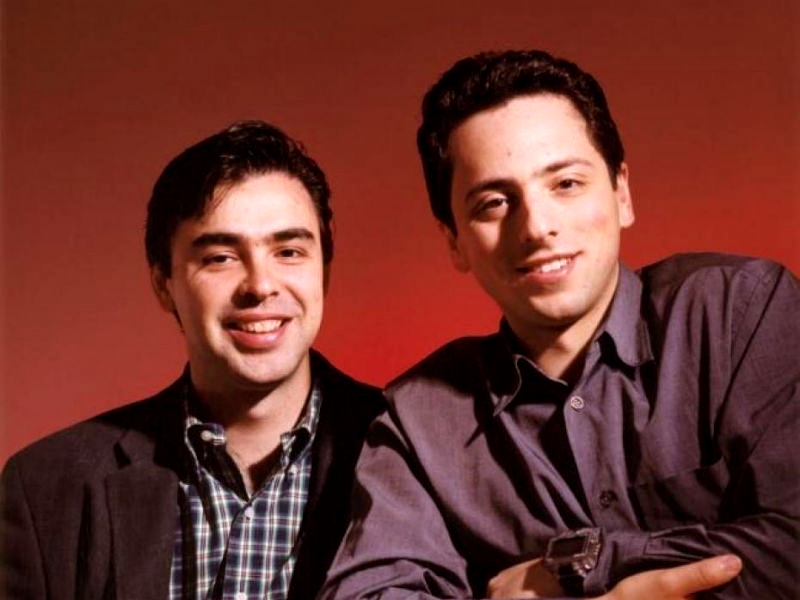
"Look, if this Google thing pans out, then great. If not, you can return to graduate school and finish your thesis," is what his adviser told him, according to Brin, to which he apparently replied, "Yeah, okay, why not? I'll just give it a try".
Somewhat frustratingly, the story of how the company got its name isn't particularly clear. Google's website simply says that it is "a play on the word 'googol', a mathematical term for the number represented by the numeral 1 followed by 100 zeros," and "reflects Larry and Sergey's mission to organize a seemingly infinite amount of information on the web".
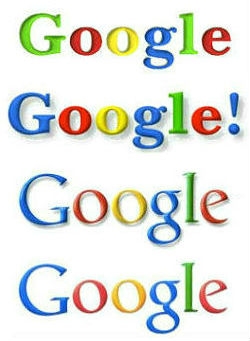 The googol link is unmissable. However, whether Page or Brin came up with 'Google' is debatable. It has been suggested that, while searching for an unregistered domain, a friend of Page spelled 'googol' incorrectly, and Page like the result. The story alleging that the company's first investor, Andy Bechtolsheim, misspelt 'googol' on a substantial check is also in circulation.
The googol link is unmissable. However, whether Page or Brin came up with 'Google' is debatable. It has been suggested that, while searching for an unregistered domain, a friend of Page spelled 'googol' incorrectly, and Page like the result. The story alleging that the company's first investor, Andy Bechtolsheim, misspelt 'googol' on a substantial check is also in circulation.The rest, as they say, is history. The google.com domain was eventually registered on 15 September 1997, the company picked up its first employee (Craig Silverstein) in September 1998 and filed its first patent a year later. After a couple of stints at a garage -- textbook startup -- in Menlo Park and an office complex in Palo Alto, the company finally settled down in Mountain View in 2003 and has remained there ever since.
Google is now worth an estimated $107.43 billion. Well done lads.
You can read about how Microsoft began here.
Image credits: Bilan, meltyBuzz
Published under license from ITProPortal.com, a Net Communities Ltd Publication. All rights reserved.
-

Lack of modern technology on the menu means UK restaurants are letting diners down
Publié: octobre 8, 2014, 12:36pm CEST par Aatif Sulleyman

While new technologies have transformed a number of sectors, including healthcare, sport and finance, it seems that at least one industry is lagging behind. A new report commissioned by Berland and released by Velocity has revealed that UK restaurants are missing out on a collective £5.6 billion per year in revenue, due to their relative ignorance of modern tech.
According to the results, UK diners typically have to wait 11 minutes to pay in restaurants. This adds up to a staggering month of thumb-twiddling over the course of a lifetime, says Velocity. 76 percent of diners also said that inefficient service is a huge downside of eating out, and can have a more negative effect on the overall experience than receiving the wrong food order (48 percent).
What's more, 59 percent of participants involved in the survey said that quick service is more important than variety of food (49 percent) and ambiance (23 percent).
From a business perspective, 50 percent of respondents said that they would eat out at least once more each week if they could pay for food through mobile restaurant apps, and 64 percent said that they would use restaurant loyalty schemes if they came bundled into an app. Just 20 percent currently make use of such promotions.
"New technology is increasingly empowering consumers to take control, enhancing our experiences with immediate gratification. We are already seeing this in the transport, hotel and home entertainment sectors... but these advances aren't happening in a meaningful way in the UK dining sector yet," said Alex Macdonald, Velocity's co-founder.
"These technological advances have the potential to transform the dining sector resulting in quicker bill payment, personalized service and increased customer loyalty and sales, a rare win-win for both consumers and restaurants".
We recently caught up with Bradley Duke, the UK MD of Zapper, a company that allows consumers to quickly pay for restaurant bills using QR codes.
"The key to restaurants actually saving money through technology is making operations run more efficiently," said Duke. "Empowering a customer to pay on their own terms with a smartphone means that not only are they getting a great experience but waiters are freed up to handle more covers in one evening and provide better service -- rather than standing around with a card reader.
"The reason restaurants are slow to embrace modern technology is often the high barriers to entry. If you need to set up a whole new POS and there's little benefit then you're simply not going to. Besides just saving money, technology well-used can actually build revenues by driving footfall and promoting loyalty".
Having seen the app in action at a branch of the Burger and Lobster restaurant chain in London, it's a wonder such software isn't already in widespread use.
Image credit: BGR
Published under license from ITProPortal.com, a Net Communities Ltd Publication. All rights reserved.
-

Tesco hudl2: A cheap Android tablet that'll please the whole family [Hands on]
Publié: octobre 6, 2014, 9:17am CEST par Aatif Sulleyman
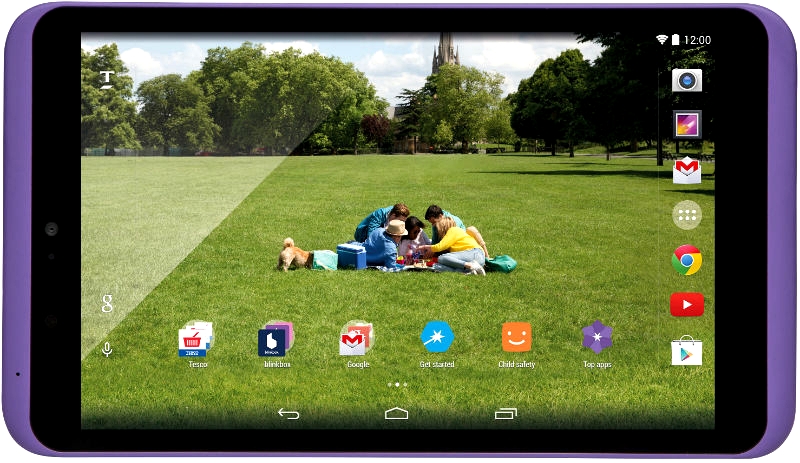
Tesco has launched the successor to the one of 2013's standout budget consumer tech products. The hudl2 tablet has arrived in the UK, and it's well worth taking notice of.
Featuring a decent 8.3in, 1,920 x 1,200 pixel resolution screen, a 1.83GHz Intel Atom quad-core processor and 16GB of internal storage (which can be boosted to 48GB), its specifications don't exactly make the mind boggle.
Eight hours of battery life and a pretty meager pair of cameras (a 5-megapixel snapper on the back and a 1.2-megapixel one on the front) don't exactly make for much better reading. Tesco clearly hasn't taken notice of the meteoric rise of the selfie, and this made me feel a little bit sad. However, the hudl2 is clearly not built for hipsters or posers.
It's a pretty simple-looking slate that isn't exactly going to pip the iPad to any design awards. Jony Ive, your job's safe for now. The rubberized casing feels good in the hand but unfortunately brings a distinctly budget look and feel to the device. The fact that it's available in eight different colors (blue, orange, black, red, turquoise, white, purple and pink) will certainly add to its market appeal though.
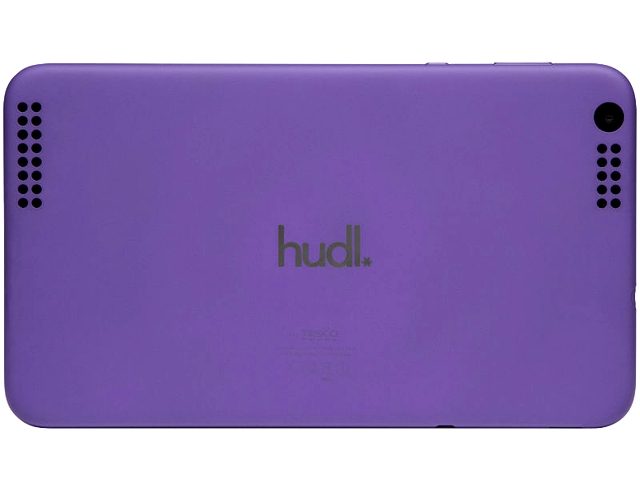
A customized version of Android 4.4.2 KitKat is the operating system of choice, which means that apps will not be difficult to come by. A 'T' icon sits on the top left corner of the home screen, and links to a variety of Tesco's own apps and services, encouraging shoppers to part with their precious cash.
One of the most frequently used words at the launch was 'accessibility'. Tesco isn't beating around the bush -- this is a family-friendly device. One of the features Tesco is most proud of with the hudl2 is the parental filter software. With this, users will be able to create up to seven different profiles on a single hudl2 tablet, complete with various age and suitability restrictions. Developed in conjunction with TheParentZone, online safety is clearly high on Tesco's agenda, which will -- at the very least -- reassure plenty.
As a device, it's unremarkable. The safety features will certainly attract protective parents but, as Tesco admitted during the launch show, "We don't think we have it right". Not yet, anyway. There's a handful of nifty entertainment features too, such as Dolby-optimized audio and a range of special offers on blinkbox credit, which can be used on films, books and music.
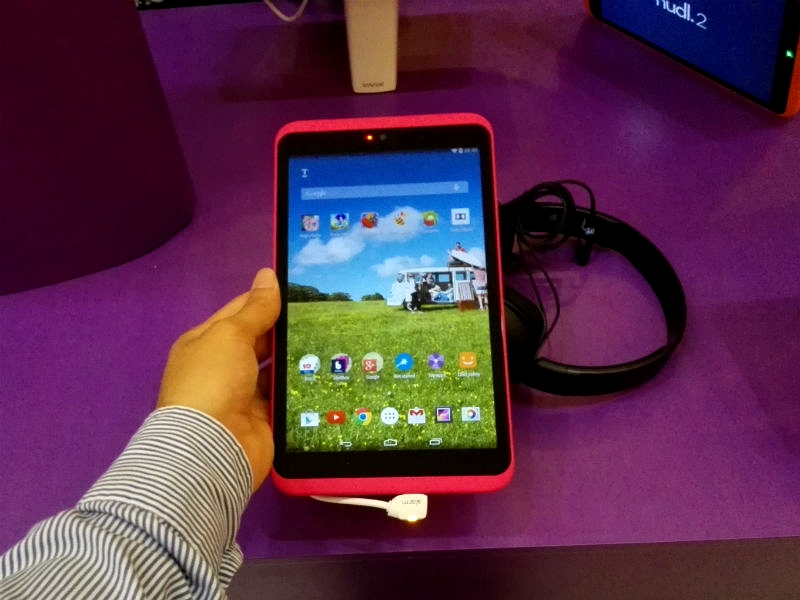
Where the hudl2 comes into its own is in the value stakes. Hitting the shelves on 9 October for £129, this is a gadget you can realistically purchase along with your weekly shopping (definitely a "big shop" though). Tantalizingly, if you play your Clubcard points game right, you could even pick up this little baby for as little as £65, which is frankly bonkers.
If you fancy a decent, cheap as chips Android tablet that you can happily share with the family, go for it. Be warned though, its predecessor wasn't exactly renowned for being long-lasting. Whether it reaches the same heights of popularity of the original hudl remains to be seen.
Published under license from ITProPortal.com, a Net Communities Ltd Publication. All rights reserved.
-

Flashback Friday: How two university dropouts created Microsoft
Publié: octobre 3, 2014, 6:30pm CEST par Aatif Sulleyman
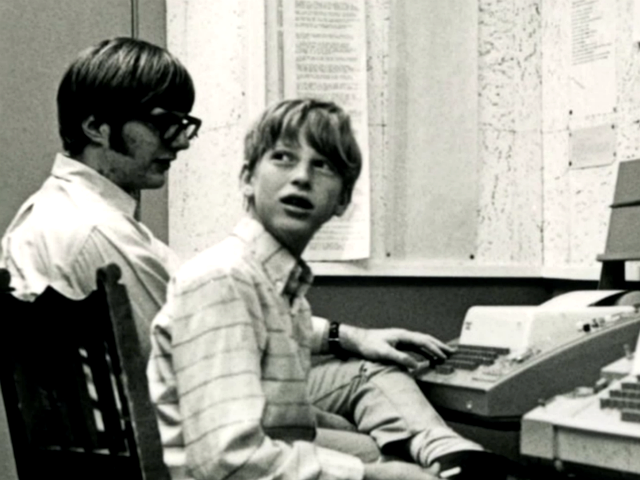
Bill Gates is a legendary figure, and not just in the world of technology. With countless awards and titles attached to his name, he has over the years been consistently recognized as one of the world's wealthiest, most powerful and most influential individuals. Also, anybody who can call themselves a 'philanthropist' in today's world has, more often than not, probably achieved something pretty grand.
However, back in the day, Gates was merely a university dropout with a thirst for hacking computer systems. True, the university was Harvard, but Gates wasn't exactly on course to becoming the multi-billionaire entrepreneur he is today.
As a schoolboy, he and his friend Paul Allen (who was three years his senior) were a pair of whipper-snapping computer geeks, in an age where computers were pretty difficult to come by. According to Microsoft's website, the "two young computer enthusiasts ...[saw] that personal computing [was] a path to the future". If you believe that the storyline was so straightforward, you'll probably also think that the NSA does indeed have our best interests at heart or that the latest iPhone is indeed the best mobile the world has ever seen.
The duo grew up in Seattle and created their first joint-venture in 1972, called Traf-O-Data, which was used for tracking and analyzing traffic. The system was so effective that they even managed to sell a computer to the City of Seattle.
Upon leaving school, Gates and Allen tried to go down the route of most school-leavers: Allen went off to study computer science at the University of Washington and Gates opted for law. Both dropped out of their respective courses, with Allen getting a job at Honeywell in Boston so that he could be closer to his friend (who was still at Harvard at the time). This, however, is when things really started to come together. Believe it or not, Allen and Gates were inspired by an article in a magazine.
After the former showed the latter a piece about Micro Instrumentation and Telemetry Systems' (MITS) Altair 8800 microcomputer in a January 1975 edition of 'Popular Electronics' magazine, the two friends cooked up a plan. Gates rang MITS, saying that Allen and himself would develop a version of the BASIC programming language. Needless to say, MITS was interested and, within eight weeks, Gates and Allen had achieved their goal.
After the pair successfully demonstrated the product to MITS in Albuquerque, the company agreed to start distributing it under the Altair BASIC name. Allen and Gates proceeded to move from Boston to Albuquerque and co-founded an organization called 'Micro-Soft' on 4 April 1975. Where exactly the name came from is a disputed matter.
It is common knowledge that 'Micro' was taken from 'microcomputer' and 'Soft' came from 'software', but whether Gates or Allen conjured up the name is a little bit murky. The most prevalent theory, at least as far as the Internet is concerned, is that of Gates referring to his partnership with Allen as 'Micro-Soft' in a July 1975 letter.
However, this story was debunked by Allen and Gates themselves in a 1995 interview. The duo told Fortune magazine:
Gates: When we signed that first contract with MITS, we referred to ourselves as 'Paul Allen and Bill Gates doing business as Micro-Soft'. I don't remember why we spelled it with a hyphen and a capital 'S'. We put a credit line in the source code of our first product that said, "Micro-Soft BASIC: Bill Gates wrote a lot of stuff; Paul Allen wrote some other stuff." We never officially incorporated until 1981.
Allen: We had talked about a lot of different names back in Boston, and at some point I said, "Well, the totally obvious name would be Microsoft".
Gates: We also had mentioned names like Outcorporated Inc. and Unlimited Ltd., but we were, you know, joking around. We talked a lot about whether we should call it Allen & Gates, but decided that was not a good idea.
Allen: Yeah. Because companies like DEC and IBM weren't named after personalities, they would have a longevity and identity way beyond the founders...
Gates: ...and it seemed like a law firm or like a consulting company to call it Allen & Gates. So we picked Microsoft even before we had a company to name.
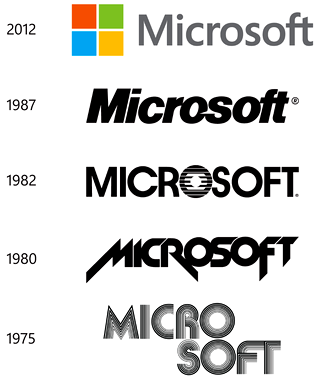 The company name (complete with hyphen), was registered with the Secretary of State of New Mexico by late November 1976. The following year, Micro-Soft opened its first international office in Japan, and in 1979, it moved its headquarters to Bellevue, Washington, since top programmers were generally unwilling to relocate to Albuquerque.
The company name (complete with hyphen), was registered with the Secretary of State of New Mexico by late November 1976. The following year, Micro-Soft opened its first international office in Japan, and in 1979, it moved its headquarters to Bellevue, Washington, since top programmers were generally unwilling to relocate to Albuquerque.On 25 June 1981, the company became an incorporated business and changed its name to 'Microsoft Corporation Inc'. It's been through some drastic changes in the 30-odd years since -- Allen was unfortunately diagnosed with Hodgkin's lymphoma in 1982 and has left the company, Gates has taken a backseat role, Steve Ballmer (who Gates met at Harvard) has been and gone and Satya Nadella is now making his mark -- but has established itself as one of the most important companies in the world.
I wonder if Allen & Gates would ever have made it so big?
Published under license from ITProPortal.com, a Net Communities Ltd Publication. All rights reserved.
-

Addicted to gadgets and constantly tired? That's the modern world!
Publié: août 8, 2014, 8:32am CEST par Aatif Sulleyman
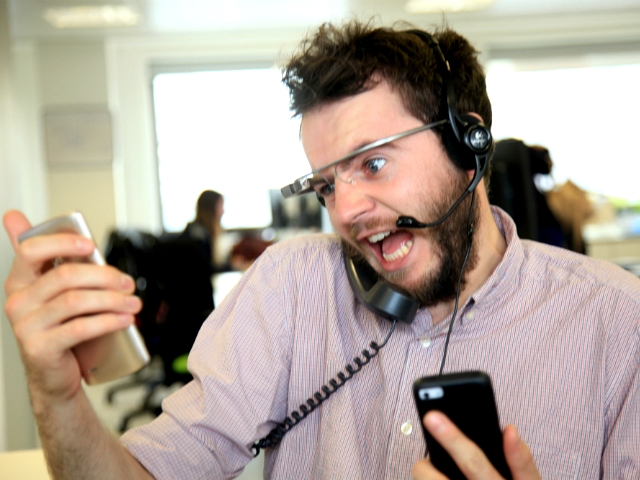
According to new research, Britons are now spending more time using technology devices than sleeping.
Ofcom has released a fresh report detailing our daily habits, and the results are relatively scary.
The average British adult spends eight hours and 41 minutes per day using high-tech gadgetry, on a sleep of just eight hours and 21 minutes.
However, this figure only tells part of the story.
The communications regulator reports that 16-24-year-olds spend over 14 hours -- that's more than 58 percent of the day -- on their gadgets. "How is this possible?" you might well ask.
Multi-tasking has become far easier since the meteoric rise of mobility -- most people today make use of multiple devices, as well as different forms of social media. Incredibly, 16-24-year-olds manage to cram this amount of tech-based activity into just nine hours and eight minutes.
The average adult multi-tasker, meanwhile, spends over 11 hours a day making use of their electronic devices. This number has risen by over two hours since 2010.
Last week, we found out that 70 percent of Brits spend more time using smartphones, tablets and PCs than they do chatting face-to-face with family, friends and colleagues.
Ofcom's survey involved 2,800 UK adults and children. The organization has also set up an online survey, where you can find out how "tech savvy" you are.
Published under license from ITProPortal.com, a Net Communities Ltd Publication. All rights reserved.
-

Is Yahoo planning a video service to rival YouTube?
Publié: mai 30, 2014, 1:21pm CEST par Aatif Sulleyman
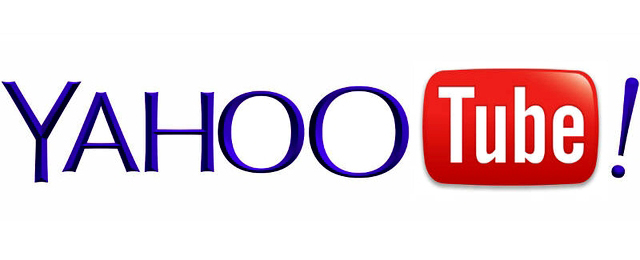 Yahoo is reportedly preparing a YouTube rival that will go live later this summer.
Yahoo is reportedly preparing a YouTube rival that will go live later this summer.According to Advertising Age, which cites sources close to Yahoo, the Internet giant has harbored such plans since 2012, when Marissa Mayer first took over the company's reigns. Just over a year ago, it tried to pick up Dailymotion.
It seems that Yahoo initially intended to reveal its new service back in April, but contracts spats have delayed the launch.
The platform would share many similarities with YouTube, such as the ability for users to build their own channel pages and embed their Yahoo videos on other sites. However, Yahoo is hoping to trump its rival by offering content creators more lucrative financial offerings.
These would come in the form of chunkier revenue sharing agreements or significantly higher fixed advertising rates. Right now, exact numbers are unknown.
As things stand, YouTube creators currently lose 45 percent of their advertising revenues to Google, and would likely jump at the opportunity to make more from their videos.
However, Yahoo is believed to have upset a lot of creators with its content ownership proposal. According to sources, Yahoo wants total ownership of all clips shared to Tumblr.
"I've never seen anything like that in my life," said a producer involved in negotiations with the company. "Anyone who's done a content deal knows that would never fly".
Published under license from ITProPortal.com, a Net Communities Ltd Publication. All rights reserved.
-

Angry Cisco CEO calls on Obama to rein in surveillance
Publié: mai 20, 2014, 8:33pm CEST par Aatif Sulleyman

Cisco's head has called on President Barack Obama to stop bugging his company's networking equipment.
John Chambers was reacting to the emergence of pictures showing National Security Agency (NSA) workers breaking open Cisco networking equipment in order to install surveillance tools in them. These devices would subsequently be resealed and sent out to customers, including Internet service providers and other major tech companies.
The incriminating snaps were published by former Guardian journalist Glenn Greenwald in his new book entitled 'No Place to Hide: Edward Snowden, the NSA and the Surveillance State'. Greenwald worked closely with Snowden to expose the US and UK governments' PRISM spying program and made headlines when his partner David Miranda was detained for nine hours by British authorities at Heathrow airport, apparently under anti-terrorism laws.
Miranda also had all of his electronic devices confiscated and examined.
Last week, Chambers made his feelings known by penning a letter to Obama, saying, "We simply cannot operate this way, our customers trust us to be able to deliver to their doorsteps products that meet the highest standards of integrity and security".
Chambers also called on Obama to implement new "standards of conduct" as soon as possible. Many US-based companies, including Cisco, have lost a great deal of customers to European and Asian rivals, due to a lack of trust from surveillance-wary customers.
Earlier this year, we caught up with Trend Micro CEO Eva Chen, who said, "Trend Micro is a Japanese company, so actually... we benefitted [from the PRISM scandal] because we saw companies, especially in Europe, start to say, 'I'm not sure I want to use US companies' services'".
"If these allegations are true," continues Chambers' letter, "these actions will undermine the confidence in our industry and in the ability of technology companies to deliver products globally... we are concerned that our country's global technological leadership will be impaired".
Obama has attracted a lot of criticism for his handling of the saga. Back in January, given the opportunity to apologize for the NSA's actions, he went down a rather different track.
"We will not monitor the communications of heads of state and government of our close friends and allies," he said. "But let me be clear: our intelligence services will continue to monitor the intentions of governments around the world. We shouldn't have to apologize just because our capabilities are greater than others".
In his letter, Chambers also implored Obama to "take more steps and a leadership role to ensure that guidelines and reforms are put into place that can be honored across the globe".
Published under license from ITProPortal.com, a Net Communities Ltd Publication. All rights reserved.
-

Huawei Ascend P7 vs Apple iPhone 5s -- which is the better smartphone?
Publié: mai 10, 2014, 9:06am CEST par Aatif Sulleyman
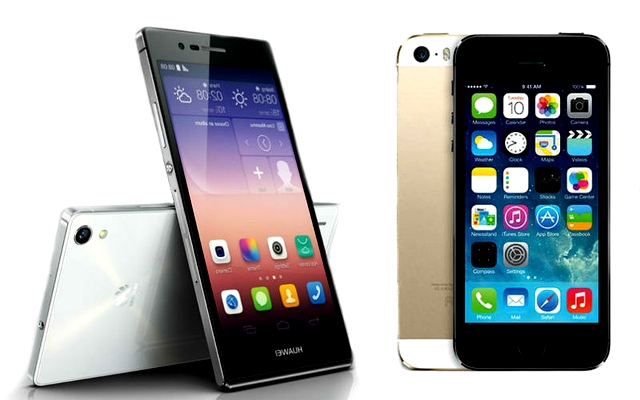
Less than a year after the launch of the Ascend P6, Huawei has revealed its latest flagship, the Ascend P7. The Chinese company, which is a massive force in the telecommunications sector, is desperate to make a similar impact in the smartphone arena.
Many in the industry had already written off Huawei's attempts well before the P7's launch, simply because they feel that the competition is far too strong. One of these rivals is the Apple iPhone 5s. So how do the devices measure up to each other?
First of all, I think the 5s edges the P7 in terms of looks, but just about. Huawei deliberately chose Paris as the location for its phone's unveiling because of its links to the fashion industry, and the P7 instantly became one of the most stylish devices of its kind on the market. However, the iPhone's effortless design and beautiful simplicity make it not only a sexy mobile but also an undeniably attractive accessory.
Immediately striking is the size difference between the two smartphones. The P7 is much larger than the 5s in two dimensions, and weighs 12g more than its counterpart. The P7 though, is somehow over a millimeter slimmer than Apple's offering. Understandably, the P7's 5in, 1,920 x 1,080 resolution screen, translating into a super-clear 441 pixels per inch beats the iPhone's 4in, 1,136 x 640 resolution, 326PPI display in every single way.
Apple's flagship holds the much-praised A7 SoC, clocked at 2.3GHz. The P7, on the other hand, packs the Hisilicon Kirin 910T, of which little is currently known. This is clocked at 1.8GHZ. Neither of the phones' batteries are worth shouting about, but the P7's 2,500mAh version, which offers up to 14 hours of 3G talk time, is stronger than the iPhone 5s' 1,560mAh juice box, which offers a measly 10 hours or less.
The 5s comes in 16GB, 32GB and 64GB models, while the P7 only offers up 16GB of internal storage. However, the latter offers expandable memory via a microSD slot, which its rival lacks. The P7's 2GB of RAM beats the 5s' 1GB. There's no surprises in terms of Bluetooth and 4G connectivity.
The Ascend P7's 13-megapixel rear camera and 8-megapixel front-facing snapper aren't troubled by the iPhone's 8-megapixel and 1.2-megapixel versions. If you're a fan of pictures, there's only one winner in this particular department.
Huawei Ascend P7 Apple iPhone 5s Display Screen size 5in 4in Resolution 1,920 x 1,080 pixels 1,136 x 640 pixels Pixel density 441PPI 326PPI Type IPS LCD IPS LCD Processor and battery Family Apple A7 CPU Hisilicon Kirin 910T ARMv8 Cores Quad-core Dual-core Clock speed 1.8GHz 1.3GHz Battery 2,500mAh 1,560mAh Claimed 3G talk time Up to 14h Up to 10h Storage and memory RAM 2GB 1GB Internal storage 16GB 16GB / 32GB / 64GB microSD Yes No Camera Rear 13-megapixel 8-megapixel Video 1080p @ 30fps 1080p @ 60fps Front 8-megapixel 1.2-megapixel Wireless Standard 4G LTE 4G LTE Wi-Fi 802.11 a/b/g/n 802.11 a/b/g/n NFC Yes No Bluetooth v4.0 v4.0 Integrated wireless charging No Dimensions Size 139.8 x 68.8 x 6.5mm 123.8 x 58.6 x 7.6mm Weight 124g 112g Operating System Android 4.4.2 KitKat iOS 7 Price (SIM-free unless otherwise stated) RRP €449 £549 (16GB) / £629 (32GB) / £709 (64GB) Availability Expected June 2014 Available Published under license from ITProPortal.com, a Net Communities Ltd Publication. All rights reserved.